Balkinization
an unanticipated consequence of
Jack M. Balkin
Balkinization Symposiums: A Continuing List
E-mail:
Jack Balkin:
jackbalkin at yahoo.com
Bruce Ackerman
bruce.ackerman at yale.edu
Ian Ayres
ian.ayres at yale.edu
Corey Brettschneider
corey_brettschneider at brown.edu
Mary Dudziak
mary.l.dudziak at emory.edu
Joey Fishkin
joey.fishkin at gmail.com
Heather Gerken heather.gerken at yale.edu
Abbe Gluck abbe.gluck at yale.edu
Mark Graber
mgraber at law.umaryland.edu
Stephen Griffin
sgriffin at tulane.edu
Jonathan Hafetz
jonathan.hafetz at shu.edu
Jeremy Kessler
jkessler at law.columbia.edu
Andrew Koppelman
akoppelman at law.northwestern.edu
Marty Lederman
msl46 at law.georgetown.edu
Sanford Levinson
slevinson at law.utexas.edu
David Luban
david.luban at gmail.com
Gerard Magliocca
gmaglioc at iupui.edu
Jason Mazzone
mazzonej at illinois.edu
Linda McClain
lmcclain at bu.edu
John Mikhail
mikhail at law.georgetown.edu
Frank Pasquale
pasquale.frank at gmail.com
Nate Persily
npersily at gmail.com
Michael Stokes Paulsen
michaelstokespaulsen at gmail.com
Deborah Pearlstein
dpearlst at yu.edu
Rick Pildes
rick.pildes at nyu.edu
David Pozen
dpozen at law.columbia.edu
Richard Primus
raprimus at umich.edu
K. Sabeel Rahmansabeel.rahman at brooklaw.edu
Alice Ristroph
alice.ristroph at shu.edu
Neil Siegel
siegel at law.duke.edu
David Super
david.super at law.georgetown.edu
Brian Tamanaha
btamanaha at wulaw.wustl.edu
Nelson Tebbe
nelson.tebbe at brooklaw.edu
Mark Tushnet
mtushnet at law.harvard.edu
Adam Winkler
winkler at ucla.edu
Compendium of posts on Hobby Lobby and related cases
The Anti-Torture Memos: Balkinization Posts on Torture, Interrogation, Detention, War Powers, and OLC
The Anti-Torture Memos (arranged by topic)
Recent Posts
The Fairness Doctrine, Part I
Just A Few Blogs
ACS Blog
Alas, a Blog
Althouse
Arts and Letters Daily
Atrios (Eschaton)
Bill of Health
Buzzflash.com
Buzz Machine
Cato at Liberty
Juan Cole (Informed Comment)
Concurring Opinions
The Constitution in 2020
Corrente
Crooked Timber
Daily Howler
Daily Kos
Dana Boyd
Brad DeLong
Digby (Hullabaloo)
Discriminations
Daniel Drezner
Kevin Drum (Mother Jones)
Electrolite
En Banc
Eunomia (Daniel Larison)
Fafblog
Michael Froomkin (Discourse.net)
GovLab (Beth Noveck)
Rick Hasen (Election Law)
History News Network
How Appealing
Ignatz (Sam Heldman)
The Importance of (Ernie Miller)
Infolaw
Instapundit
International Economic Law and Policy Blog
IntLawGrrls
Jacob Levy
Jesus' General
Jurisdynamics
The Kitchen Cabinet
Mark Kleiman
Law Blog Central
Larry Lessig
Lawyers, Guns and Money
Liberal Oasis
Brian Leiter's Law School Reports
The Leiter Reports
Marginal Revolution
Megan McArdle
Memeorandum
Metafilter
Mirror of Justice
The New Republic
Newseum
No More Mister Nice Blog
Brendan Nyhan
Opinio Juris
Orcinus
The Originalism Blog
Pandagon
Passport (Foreign Policy)
Overcoming Bias
Political Animal (Washington Monthly)
Political Theory Daily Review
Political Wire (Taegan Goddard)
The Poor Man
Virginia Postrel
Prawfsblawg
Public Reason
Jonathan Rauch
Raw Story
Redstate
ReligiousLeftLaw.com
Reporters Committee For Freedom of the Press
Reproductive Rights Blog
Rothman's Roadmap to the Right of Publicity
SCOTUS Blog
Seeing the Forest
Clay Shirky
The Shifted Librarian
The Situationist
Larry Solum (Legal Theory)
Andrew Sullivan
Talking Points Memo
Talk Left
Tapped
Tbogg
TechPresident
The Paper Chase (Jurist)
Tom Paine
Tom Tomorrow (This Modern World)
Eve Tushnet
Uggabugga
University of Chicago Law School Faculty Blog
Unqualified Offerings
The Volokh Conspiracy
War and Piece (Laura Rozen)
Wampum
Oliver Willis
Wonkette
Written Description
Matthew Yglesias
Yin
Your Choice of Feeds
1. XML
powered by
2. Atom Feed
3. RSS 2.0
The Fairness Doctrine, Part I
JB
Senators Durbin and Kerry have recently raised the possibility of resurrecting the Fairness Doctrine. Senators Thune and Coleman have tried a preemptive strike against it. The right wing of the blogosphere is very much in arms about the issue, fearing that the Democrats are going to reinstate it. There is almost no chance that they will do so in the next two years, and even if they did, President Bush has vowed to veto the bill. Nevertheless, if the Democrats win the White House in 2008 there is an outside chance that the Fairness Doctrine might make a comeback, so I thought I'd say something about it.
The Fairness Doctrine is bad public policy and it should not be revived. That does not necessarily mean that it is unconstitutional, as many critics have charged. In fact it is probably not unconstitutional on its face, but it certainly could be unconstitutional as applied in certain circumstances. In this post, I only want to talk about its policy implications, why it is so easy to evade and why it does little to improve the quality of broadcasting. I'll leave the constitutional arguments to Part II of this series. In Part III I'll suggest what Congress might do if it really wanted to reform our broadcasting system. Critics on the right have charged that the recent attempt by Democrats to resurrect the Fairness Doctrine is an attempt to silence conservative talk radio. If that is so, it is doomed to failure, for reasons I shall describe in a moment.
A bit of history: We have been living without the Fairness Doctrine for about twenty years. The FCC, dominated by Reagan appointees in the 1980s, issued a report in 1985 arguing that the Fairness Doctrine was no longer necessary given the increase in media outlets due in part to cable penetration. The FCC also argued that the doctrine chilled speech and was probably unconstitutional, despite the fact that the Supreme Court upheld aspects of it in 1969 in the Red Lion decision. In any case, the FCC eliminated the Fairness Doctrine in 1987. Congress tried to reestablish it by statute several times in the years that followed, but Presidents Reagan and George H.W. Bush vetoed the bills and their vetoes were sustained.
The Fairness Doctrine, which has its roots in the 1940s, should be distinguished from the Equal Time/Equal Opportunities provisions of the Federal Communications Act, which are statutory. They are part of section 315 of the Federal Communications Act. The equal time/equal opportunities rules require that if a licensee gives the use of broadcast facilities to a qualified candidate for public office, it must give equal time and opportunities to all of the candidate's opponents. If the licensee sells the time to a candidate, it must offer time to the other candidates at the same rate; if it gives away time free, it must offer opponents time for free. There are exceptions for bona fide news events and interviews. The purpose of the Equal Time/Equal Access rules are to prevent broadcast stations from becoming effectively propaganda mouthpieces for particular candidates during election time.
The Fairness Doctrine is both broader and narrower in scope. It is narrower in the sense that it does not require that the licensee actually give the microphone to anyone else, as the equal time provision does. Many people who write about the Fairness Doctrine assume that the Fairness Doctrine requires that licensees let strangers use the station's facilities. That is only true under two sub-doctrines-- the so-called personal attack rules and the political editorializing rules. These are narrowly defined and rarely apply. In general, the Fairness Doctrine does not require this, as long as the licensee covers different points of view. As I'll explain shortly, this feature allows licensees to get around the Fairness Doctrine fairly easily.
The Fairness Doctrine is broader in scope because it applies in many more cases than the Equal Time provisions. The doctrine has (or had) two prongs. The first prong requires broadcast licensees to cover important issues of public concern. The second prong requires licensees to cover contrasting points of view fairly. The first prong was as important to the doctrine as the second. Its goal was to ensure that broadcast licensees did not provide only entertainment, but also contributed to public debate. But in doing so, it had to be an honest broker in its coverage. Originally, under the FCC's Mayflower doctrine, licensees were forbidden from editorializing at all. That prohibition was dropped in the late 1940s and the Fairness Doctrine was adopted as a less restrictive alternative. Henceforth licensees could editorialize if they allowed opportunity for discussion of contrasting perspectives.
By the 1980s, the fairness doctrine had long outlived its usefulness. It is possible that it was good public policy during the period in which there were only a limited number of television stations in each community, although I doubt it. The reason I doubt it was that the fairness doctrine in practice was fairly easy for most licensees to evade and mostly caused them bureaucratic problems.
First, licensees mostly decided for themselves what issues were of public concern. This allowed them to limit the ways in which the doctrine would affect them.
Second, licensees were permitted to decide what "both sides" of the relevant issue were and who would represent those sides. Issues are often multidimensional. Since it would not be possible to cover all aspects of a question, the licensee was given considerable range in choosing what the issue was, what the "reasonable" positions were on an issue, and who would present those positions. Licensees could exclude "extremist" positions or could include them to discredit the side they did not like.
To give only one example, when a reporter covered a controversy, the fairness doctrine did not demand anything more than traditional journalistic neutrality/objectivity. Journalists could present contrasting quotes from sources they themselves chose. Thus, a licensee determined to provide a particular message with respect to an issue could easily frame matters and select spokespersons so as to give a slanted portrayal. They could select only a narrow range of views on a topic and they could pick weak or unsympathetic representatives of positions they did not favor.
Perhaps more to the point, most licensees didn't want to cover public issues very much at all. Rather, they wanted to focus on entertainment and sports, and regarded the Fairness Doctrine as mostly a nuisance.
In practice, the Fairness Doctrine did not pose much of a problem for broadcasters who simply wanted to broadcast entertainment and sports, and whose coverage of contemporary events was broadly and blandly mainstream in their tastes, either liberal or conservative. It was more problematic for a handful of station owners who had a decidedly out of the mainstream point of view and who wanted to use their license to broadcast their views to the exclusion of others. The Fairness Doctrine fit mainstream journalistic practices of objectivity (with all their faults and non-objective elements) like a glove, which was not surprising because the Doctrine was modeled on those developing practices.
What about today, though? The increase in number of media outlets meant that advertiser-driven stations could make money by covering smaller niches and thus appeal to only one side of the political spectrum. This is one reason for the rise of conservative talk radio.
The Fairness Doctrine would probably require a change in formats for conservative talk radio. But it would not necessarily require actual fairness. Nor would it necessarily change the demagogic character of talk radio. Rush Limbaugh might have to invite a series of liberal patsies to give their views, which he could bully, make fun of, or talk past. Or he could offer his account of liberal views, which would no doubt be highly amusing to his audience. A radio version of Fox's Hannity and Colmes would clearly have passed muster under the Fairness Doctrine as the FCC enforced it in the old days, because, after all, there's Colmes, isn't there? It's true that Hannity sometimes treats him as a sidekick, and that he's not very liberal, but he does present contrasting points of view.
Now it's true that, under the Fairness Doctrine, someone like Michael Savage couldn't rant on and on without letting someone get a word in edgewise, but since Savage would be allowed to pick his opponents, it is unlikely that the bottom line message of talk radio would change all that much. It would simply be pitched in a way that preserved a fig leaf of fairness given bureaucratic imperatives from the FCC.
As you can see, given how easy it is to get around the requirements of the Fairness Doctrine, the doctrine is not going to do much to cure the bad behavior we see on the airwaves these days. At most it will cause bureaucratic problems for licensees, and require them to hire a few more personnel. Perhaps it will lead to the hiring of a few liberal patsies and punching bags. So think of it as affirmative action for milquetoasts. But what it won't do is improve the quality of talk radio.
In my next installment, I'll discuss the constitutional arguments for and against the fairness doctrine. It turns out that these arguments are trickier than they might at first seem.
UPDATE: Eugene Volokh has more on the implementation problems with the Fairness Doctrine. He also quotes from Powe and Krattenmaker's study, which, I think, offers the best criticisms of the doctrine as it developed before 1987.
Posted
10:45 AM
by JB [link]
Paul
In light of your persuasive argument about the ease of evading the Fairness Doctrine (I was pre-disposed to agree anyway), does the ET/EA rule really work? It seems obvious to me that, as a factual matter, it doesn't. Maybe that's just an enforcement issue, but I suspect it's subject to the same evasions as the Fairness Doctrine.
I agree that the fairness doctrine probably is bad policy. But when the percentage of conservative vs. liberal talk approaches 100 to zero in many markets, such as this Montana market, and when the few liberals who have the courage to call in to conservative shows are routinely shouted down, then the marketplace of ideas has broken down.
I will read with interest your suggestions in Part 3.
I'd add that, given their superior resources and access to (and revolving identity with) regulators, people at rightwing media firms would in no time at all work up a double standard and deluge progressives outlets in nuisance actions.
Glenn Greenwald has a post up on Salon titled "What Beltway media stars mean by 'centrism' and 'extremism.' " It hits home in the same way: the media that give the stars airtime fix the terms of debate in outright disregard of public opinion.
About the last thing we need is a government seal of approval for such issue-framing. To me it is hardly an accident that each restorationist, Kerry and Durbin, has let himself be framed by the right, Kerry as a fake warrior, Durbin as so unpatriotic as to openly wring his hands at the thought that we may be borrowing interrogation techniques from the Nazis.
With friends like this, who needs enemies?
I look forward to Parts II and III. In the meantime I'll plug one of our more visionary senators, Bernie Sanders, who defines the fairness issue in contemporary terms: access, diversity of ownership, and interlocking arrangements.
Sanders notes that UHF frequencies will soon be up for auction and could be made available to wholesalers but won't unless we do something about it. He also calls attention to the iPod's tie-in to AT&T. His article is here: www.commondreams.org/archive/2007/07/27/2820/.
In Turner Broadcasting System, Inc.. v. F.C.C., (1994) Kennedy, with Scalia concurring, wrote for the court observing that since 1943, minimal scrutiny has been applied to broadcasting regulations. He wrote, "It is true that our cases have permitted more intrusive regulation of broadcast speakers than of speakers in other media." He also cited White saying, "[w]here there are substantially more individuals who want to broadcast than there are frequencies to allocate, it is idle to posit an unabridgeable First Amendment right to broadcast comparable to the right of every individual to speak, write, or publish."
But in FEDERAL ELECTION COMM’N v. WISCONSIN RIGHT TO LIFE, INC, in a case which dealt basically with a broadcasting regulation, the Supreme Court (with the votes of Kennedy and Scalia) ignored cases stretching back to over 60 years ago and applied some form of heightened scrutiny to a broadcasting regulation. I think we can say that the Roberts courts is no longer going to respect those precedents and in fact is willing to effectively overrule them if they get in the way of striking down down certain laws they dislike - although Roberts himself won't so because standard Roberts operating procedure is to not say so.
But really, where is the evidence for the parade of horribles? The Fairness Doctrine was not attacked in the 1970s and 1980s, when there was a veritiable explosion of political litigation.
I doubt most real world radio and television stations would be sued for airing two diverging points of view, but not a third diverging view. And I doubt that it would be worse under a Fairness Doctrine revival of television and radio than it is now.
So let's try reviving the Fairness Doctrine and see what happens. Maybe Kennedy will swing to the other side and television and radio might improve its balance of political voices.
>>>>>Many people who write about the Fairness Doctrine assume that the Fairness Doctrine requires that licensees let strangers use the station's facilities. That is only true under two sub-doctrines-- the so-called personal attack rules and the political editorializing rules. These are narrowly defined and rarely apply. <<<<<<
The "personal attack rule" and the "political editorial rule" were repealed in 2000, whereas the fairness doctrine itself was abandoned in 1987. For details about these two rules and their histories, see this comment on Volokh Conspiracy.
Also, the Red Lion decision does not apply to the fairness doctrine generally but only applies to the personal attack rule and the political editorial rule. The Red Lion decision says,
We need not and do not now ratify every past and future decision by the FCC with regard to programming . . . . . But we do hold that the Congress and the Commission do not violate the First Amendment when they require a radio or television station to give reply time to answer personal attacks and political editorials.
Jack Balkin said,
>>>>>>The equal time/equal opportunities rules [in section 315 of the Federal Communications Act] require that if a licensee gives the use of broadcast facilities to a qualified candidate for public office, it must give equal time and opportunities to all of the candidate's opponents. <<<<<<
There is actually no general "equal time" requirement -- a reference says,
The equal time, or more accurately, the equal opportunity provision of the Communications Act requires radio and television stations and cable systems which originate their own programming to treat legally qualified political candidates equally when it comes to selling or giving away air time. Simply put, a station which sells or gives one minute to Candidate A must sell or give the same amount of time with the same audience potential to all other candidates for the particular office. However, a candidate who can not afford time does not receive free time unless his or her opponent is also given free time. Thus, even with the equal time law, a well funded campaign has a significant advantage in terms of broadcast exposure for the candidate.
However, sometimes "equal time" is required where a candidate's appearance is non-political: ". . .during Ronald Reagan's political campaigns, if a station aired one of his films, it would have been required to offer equal time to Mr. Reagan's opponents."
There appears to be some overlap between (1) the repealed personal attack and political editorial rules and (2) the so-called "equal time/equal opportunity" law, Section 315 of the Federal Communications Act. However, air time was required to be offered for free under the personal attack and political editorial rules, whereas Section 315 of the FCA only requires that all candidates be charged equal amounts (including zero) for air time. Also, those two repealed rules required that the air time be used for rebuttal of a personal attack or political editorial on the same channel -- Section 315 has no such requirement.
Paul said (11:27 AM) --
. . .91% of talk radio in this country is conservative and 9% is progressive. This huge imbalance is due to corporate support of conservative talk, the likes of which progressive stations receive little because it doesn't support "their" agenda.
Good point. Conservative talk show hosts tend to be pro-business in their views about issues concerning the environment, labor, business regulations, business taxes, the fairness doctrine (yes), etc., and I think that explains the radio stations' and commercial sponsors' preference for conservative talk shows.
>>>>> I think the Roberts Court would probably strike down the Fairness Doctrine as unconstitutional. One would think this has already been decided by Red Lion Broadcasting Co. v. FCC (1969) (unanimous opinion). But FEDERAL ELECTION COMM’N v. WISCONSIN RIGHT TOLIFE, INC. (2007) indicates Red Lion Broadcasting Co. v. FCC and that line of reasoning is no longer operative. <<<<<<
As I pointed out, Red Lion did not rule on the Fairness Doctrine generally but only upheld the two "corollary" or "sub-doctrine" rules, the "political editorial rule" and the "personal attack rule," as constitutional. Red Lion said,
We need not and do not now ratify every past and future decision by the FCC with regard to programming . . . . . But we do hold that the Congress and the Commission do not violate the First Amendment when they require a radio or television station to give reply time to answer personal attacks and political editorials..
The "political editorial" and "personal attack" rules, which were repealed in 2000, are described in this comment on the Volokh Conspiracy blog.
Considering how great the changes have been in the broadcasting industry since Red Lion(1969) -- with the additions of cable TV and satellite radio -- it is doubtful that the courts would consider Red Lion to be binding, anyway.
Also, in Miami Herald Publishing Co. v. Tornillo (1974), the Supreme Court struck down as unconstitutional a Florida "right to reply" law for newspapers that was equivalent to the FCC "political editorial rule." IMO that was really stupid. The Miami Herald decision is discussed in Item #8 in this article on my blog. It is often impossible to predict how the courts are going to rule in specific cases.
BTW, there is another difference between the repealed FCC "personal attack rule" and Section 315 of the Federal Communications Act (47 USC §315): The "personal attack rule" was available to everyone whereas Section 315 is available only to candidates in a public election.
1. A broad fairness doctrine would be a great burden on broadcasters because of limited air time.
2. It is often difficult or impossible to decide what is "liberal" and what is "conservative."
3. Suppose that a fairness doctrine is in effect and a broadcaster has only "conservative" talk shows and so is required to add "liberal" talk shows. The broadcaster may have to offer free air time for liberal talk shows because the liberals cannot be forced to pay for the time. Then the conservative talk show hosts are going to argue that the liberals ought to pay for air time and that the conservatives should get the free air time.
4. As I said, I think that conservative bias is built into talk radio because conservative show hosts tend to have views that favor big business and the conservative shows are therefore preferred by radio stations and commercial sponsors. This is a real dilemma because the cure may be worse than the disease.
5. It is ironic that the people who make the "let them eat cake" argument that we don't need fairness doctrines for broadcasters and newspapers because people have the alternative of expressing themselves on the Internet are the same people who are in favor of allowing arbitrary censorship of visitors' comments on blogs and other Internet forums. The argument of limited time/space does not apply to the Internet because the space for comments is virtually unlimited.
6. Here are some suggestions for reducing radio talk show bias: (1) Limit consolidation of radio station ownership and (2) require that a certain percentage of call-ins to radio talk shows not be pre-screened.
7. I think that the "personal attack" and "political editorial" rules should be restored in some form.
As I pointed out, the Supreme Court ruled in Red Lion (1969) that two corollaries of the Fairness Doctrine, the "political editorial rule" and the "personal attack rule," are constitutional --
We need not and do not now ratify every past and future decision by the FCC with regard to programming . . . . . But we do hold that the Congress and the Commission do not violate the First Amendment when they require a radio or television station to give reply time to answer personal attacks and political editorials.
However, in 2000, the DC Circuit federal court of appeals ordered the FCC to repeal these same two rules! In so ordering, the court suggested that these two rules are unconstitutional (Radio-Television News Directors Association and
National Association of Broadcasters v. FCC ) --
The court is presently asked to order the vacation of the personal attack and political editorial rules adopted by the Federal Communications Commission in 1967 as corollaries to the fairness doctrine, which the Commission abandoned in 1985. . . .
. . . . The court has previously recounted the chronology of events, now exceeding twenty years when in response to a 1980 petition to vacate the rules, nothing happened for long periods of time. See Radio-Television News Dirs. Ass'n v. FCC, 184 F.3d 872 (D.C. Cir. 1999) ("1999 Radio-Television"). The court did, however, acknowledge that the rules "interfere with editorial judgment of professional journalists and entangle the government in day-to-day operations of the media," id. at 881, and "chill at least some speech, and impose at least some burdens on activities at the heart of the First Amendment." Id. at 887. Consequently, the court held that it was incumbent upon the Commission to "explain why the public interest would benefit from rules that raise these policy and constitutional doubts." Id. at 882. (emphasis added)
In December 1999, following the denial of rehearing and rehearing en banc, the court remanded the case to the Commission, stating that the Joint Statement by the two Commissioners in support of the rules was inadequate to permit judicial review. Id. at 881-85. The court instructed the Commission's two-member majority to explain its support of the personal attack and political editorial rules in light of the Commission's conclusion in 1985 that the fairness doctrine was not in the public interest and its decision in 1987 not to enforce the fairness doctrine. Id. at 889. . . . .
. . . . The court has afforded repeated opportunities for the Commission to take final action. Despite its filings suggesting to the court that something would happen, the Commission, once again, has done nothing to cure the deficiencies of which it has been long aware. Of course, the Commission may institute a new rule-making proceeding to determine whether, consistent with constitutional constraints, the public interest requires the personal attack and political editorial rules. These are issues that the court has yet to decide. Nevertheless, extraordinary action by the court is warranted in this case, particularly in view of the fact that the six reasons proffered in support of the rules were all wanting. . . .
. . . . the court hereby recalls its mandate and issues a writ of mandamus directing the Commission immediately to repeal the personal attack and political editorial rules.(emphasis added)
So the court demanded that the FCC justify its support of the two corollary rules (the personal attack and political editorial rules) in light of the abandonment of the rest of the fairness doctrine in the period 1985-87. But a petition to vacate these two rules was filed in 1980 when the full fairness doctrine was still in effect.
These two rules might be considered to be a side-issue here because what the opponents of conservative talk radio are seeking is a full fairness doctrine, not fairness doctrine lite. However, these two rules are an important part of the story --- for example, in Red Lion, the Supreme Court declined to rule on the full fairness doctrine but only upheld these two rules.
حلي الاوريو الفطر الهندي صور تورتة حلى قهوه طريقة عمل السينابون طريقة عمل بلح الشام بيتزا هت كيكة الزبادي حلا سهل صور كيك عجينة العشر دقائق طريقة عمل الدونات طريقة عمل البان كيك طريقة عمل الكنافة طريقة عمل البسبوسة طريقة عمل الكيك طريقة عمل عجينة البيتزا فوائد القرفه
Agen Judi Online Terpercaya
Books by Balkinization Bloggers

Gerard N. Magliocca, The Actual Art of Governing: Justice Robert H. Jackson's Concurring Opinion in the Steel Seizure Case (Oxford University Press, 2025)

Linda C. McClain and Aziza Ahmed, The Routledge Companion to Gender and COVID-19 (Routledge, 2024)

David Pozen, The Constitution of the War on Drugs (Oxford University Press, 2024)

Jack M. Balkin, Memory and Authority: The Uses of History in Constitutional Interpretation (Yale University Press, 2024)
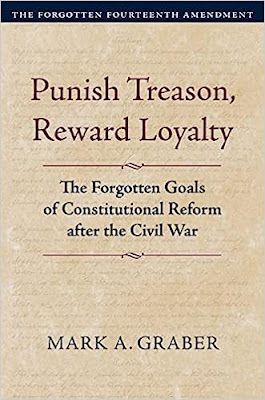
Mark A. Graber, Punish Treason, Reward Loyalty: The Forgotten Goals of Constitutional Reform after the Civil War (University of Kansas Press, 2023)
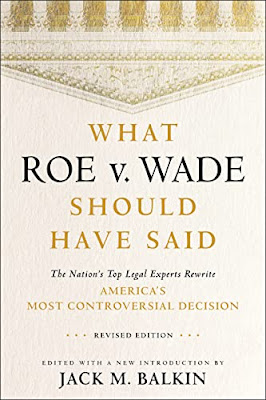
Jack M. Balkin, What Roe v. Wade Should Have Said: The Nation's Top Legal Experts Rewrite America's Most Controversial Decision - Revised Edition (NYU Press, 2023)

Andrew Koppelman, Burning Down the House: How Libertarian Philosophy Was Corrupted by Delusion and Greed (St. Martin’s Press, 2022)

Gerard N. Magliocca, Washington's Heir: The Life of Justice Bushrod Washington (Oxford University Press, 2022)
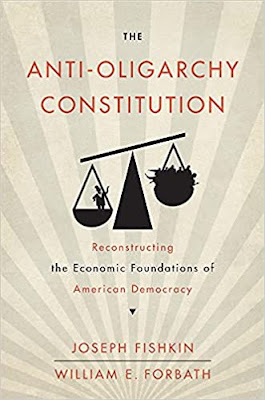
Joseph Fishkin and William E. Forbath, The Anti-Oligarchy Constitution: Reconstructing the Economic Foundations of American Democracy (Harvard University Press, 2022)
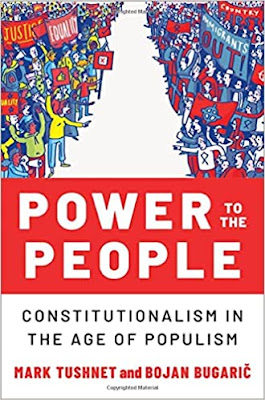
Mark Tushnet and Bojan Bugaric, Power to the People: Constitutionalism in the Age of Populism (Oxford University Press 2021).

Mark Philip Bradley and Mary L. Dudziak, eds., Making the Forever War: Marilyn B. Young on the Culture and Politics of American Militarism Culture and Politics in the Cold War and Beyond (University of Massachusetts Press, 2021).

Jack M. Balkin, What Obergefell v. Hodges Should Have Said: The Nation's Top Legal Experts Rewrite America's Same-Sex Marriage Decision (Yale University Press, 2020)

Frank Pasquale, New Laws of Robotics: Defending Human Expertise in the Age of AI (Belknap Press, 2020)

Jack M. Balkin, The Cycles of Constitutional Time (Oxford University Press, 2020)

Mark Tushnet, Taking Back the Constitution: Activist Judges and the Next Age of American Law (Yale University Press 2020).

Andrew Koppelman, Gay Rights vs. Religious Liberty?: The Unnecessary Conflict (Oxford University Press, 2020)

Ezekiel J Emanuel and Abbe R. Gluck, The Trillion Dollar Revolution: How the Affordable Care Act Transformed Politics, Law, and Health Care in America (PublicAffairs, 2020)

Linda C. McClain, Who's the Bigot?: Learning from Conflicts over Marriage and Civil Rights Law (Oxford University Press, 2020)
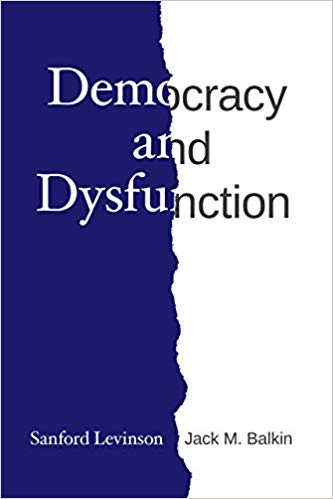
Sanford Levinson and Jack M. Balkin, Democracy and Dysfunction (University of Chicago Press, 2019)

Sanford Levinson, Written in Stone: Public Monuments in Changing Societies (Duke University Press 2018)

Mark A. Graber, Sanford Levinson, and Mark Tushnet, eds., Constitutional Democracy in Crisis? (Oxford University Press 2018)

Gerard Magliocca, The Heart of the Constitution: How the Bill of Rights became the Bill of Rights (Oxford University Press, 2018)

Cynthia Levinson and Sanford Levinson, Fault Lines in the Constitution: The Framers, Their Fights, and the Flaws that Affect Us Today (Peachtree Publishers, 2017)

Brian Z. Tamanaha, A Realistic Theory of Law (Cambridge University Press 2017)

Sanford Levinson, Nullification and Secession in Modern Constitutional Thought (University Press of Kansas 2016)

Sanford Levinson, An Argument Open to All: Reading The Federalist in the 21st Century (Yale University Press 2015)

Stephen M. Griffin, Broken Trust: Dysfunctional Government and Constitutional Reform (University Press of Kansas, 2015)

Frank Pasquale, The Black Box Society: The Secret Algorithms That Control Money and Information (Harvard University Press, 2015)

Bruce Ackerman, We the People, Volume 3: The Civil Rights Revolution (Harvard University Press, 2014)
Balkinization Symposium on We the People, Volume 3: The Civil Rights Revolution

Joseph Fishkin, Bottlenecks: A New Theory of Equal Opportunity (Oxford University Press, 2014)

Mark A. Graber, A New Introduction to American Constitutionalism (Oxford University Press, 2013)

John Mikhail, Elements of Moral Cognition: Rawls' Linguistic Analogy and the Cognitive Science of Moral and Legal Judgment (Cambridge University Press, 2013)

Gerard N. Magliocca, American Founding Son: John Bingham and the Invention of the Fourteenth Amendment (New York University Press, 2013)

Stephen M. Griffin, Long Wars and the Constitution (Harvard University Press, 2013)

Andrew Koppelman, The Tough Luck Constitution and the Assault on Health Care Reform (Oxford University Press, 2013)

James E. Fleming and Linda C. McClain, Ordered Liberty: Rights, Responsibilities, and Virtues (Harvard University Press, 2013)
Balkinization Symposium on Ordered Liberty: Rights, Responsibilities, and Virtues

Andrew Koppelman, Defending American Religious Neutrality (Harvard University Press, 2013)

Brian Z. Tamanaha, Failing Law Schools (University of Chicago Press, 2012)

Sanford Levinson, Framed: America's 51 Constitutions and the Crisis of Governance (Oxford University Press, 2012)

Linda C. McClain and Joanna L. Grossman, Gender Equality: Dimensions of Women's Equal Citizenship (Cambridge University Press, 2012)

Mary Dudziak, War Time: An Idea, Its History, Its Consequences (Oxford University Press, 2012)

Jack M. Balkin, Living Originalism (Harvard University Press, 2011)

Jason Mazzone, Copyfraud and Other Abuses of Intellectual Property Law (Stanford University Press, 2011)

Richard W. Garnett and Andrew Koppelman, First Amendment Stories, (Foundation Press 2011)

Jack M. Balkin, Constitutional Redemption: Political Faith in an Unjust World (Harvard University Press, 2011)

Gerard Magliocca, The Tragedy of William Jennings Bryan: Constitutional Law and the Politics of Backlash (Yale University Press, 2011)

Bernard Harcourt, The Illusion of Free Markets: Punishment and the Myth of Natural Order (Harvard University Press, 2010)

Bruce Ackerman, The Decline and Fall of the American Republic (Harvard University Press, 2010)
Balkinization Symposium on The Decline and Fall of the American Republic

Ian Ayres. Carrots and Sticks: Unlock the Power of Incentives to Get Things Done (Bantam Books, 2010)

Mark Tushnet, Why the Constitution Matters (Yale University Press 2010)
Ian Ayres and Barry Nalebuff: Lifecycle Investing: A New, Safe, and Audacious Way to Improve the Performance of Your Retirement Portfolio (Basic Books, 2010)
.jpg)
Jack M. Balkin, The Laws of Change: I Ching and the Philosophy of Life (2d Edition, Sybil Creek Press 2009)

Brian Z. Tamanaha, Beyond the Formalist-Realist Divide: The Role of Politics in Judging (Princeton University Press 2009)
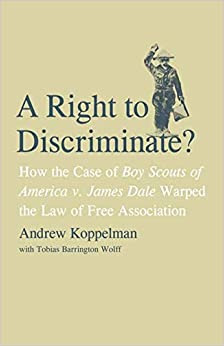
Andrew Koppelman and Tobias Barrington Wolff, A Right to Discriminate?: How the Case of Boy Scouts of America v. James Dale Warped the Law of Free Association (Yale University Press 2009)

Jack M. Balkin and Reva B. Siegel, The Constitution in 2020 (Oxford University Press 2009)
Heather K. Gerken, The Democracy Index: Why Our Election System Is Failing and How to Fix It (Princeton University Press 2009)

Mary Dudziak, Exporting American Dreams: Thurgood Marshall's African Journey (Oxford University Press 2008)

David Luban, Legal Ethics and Human Dignity (Cambridge Univ. Press 2007)

Ian Ayres, Super Crunchers: Why Thinking-By-Numbers is the New Way to be Smart (Bantam 2007)

Jack M. Balkin, James Grimmelmann, Eddan Katz, Nimrod Kozlovski, Shlomit Wagman and Tal Zarsky, eds., Cybercrime: Digital Cops in a Networked Environment (N.Y.U. Press 2007)

Jack M. Balkin and Beth Simone Noveck, The State of Play: Law, Games, and Virtual Worlds (N.Y.U. Press 2006)

Andrew Koppelman, Same Sex, Different States: When Same-Sex Marriages Cross State Lines (Yale University Press 2006)
Brian Tamanaha, Law as a Means to an End (Cambridge University Press 2006)
Sanford Levinson, Our Undemocratic Constitution (Oxford University Press 2006)
Mark Graber, Dred Scott and the Problem of Constitutional Evil (Cambridge University Press 2006)
Jack M. Balkin, ed., What Roe v. Wade Should Have Said (N.Y.U. Press 2005)
Sanford Levinson, ed., Torture: A Collection (Oxford University Press 2004)
Balkin.com homepage
Bibliography
Conlaw.net
Cultural Software
Writings
Opeds
The Information Society Project
BrownvBoard.com
Useful Links
Syllabi and Exams
